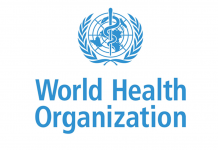This article is written by Raslin Saluja, from KIIT School of Law, Bhubaneswar. This article throws light on the various legal implications of biomedical waste and how to deal with them.
Table of Contents
Introduction
Management of bio-medical waste has an influential role in taking safeguarding measures for the protection of the environment and in general, public health. However, this aspect has not received enough focus from many healthcare service facilities like hospitals and small nursing homes. Day by day, the potential irresistible and harmful waste production has been moderately expanding, thereby creating an immediate impact on the environment. Thus, in this article, we identify the essential legal implications and issues with biomedical waste, production and strategies for better disposal techniques.
What is biomedical waste?
According to the Bio-Medical Waste Management Rules, 2016, biomedical waste (or BMW) is defined as the waste produced/generated in the process of diagnosis, treatment of a condition/disease, or immunization of human beings or animals or research activities related to/in biological producing/testing or health camps inclusive of the categories identified in Schedule I the 2016 Rules. In simpler terms, any such waste contaminated with potentially infectious components, and produced from a hospital could be human anatomical waste, animal waste from microbiology & biotechnology, waste sharps, used medical tools, discarded medicines, and cytotoxic drugs, solid & liquid waste. Based upon this, we use different measures for BMW under the heads of characterization, quantification, segregation, storage, transport, and treatment.
There are three basic principles for developing a sustainable practice of BMW – reduced, reuse, and recycle. The best management measures focus on avoiding the production of waste or recovering and reusing as much as possible, keeping disposal as a last resort. Thus according to their requirement, various methods can be put to use like prevent, reduce, reuse, recycle, recover, treat, and lastly dispose of, which is what is known as being managed at its source rather than opting for the end of pipe approach.
Treatment and disposal facility of biomedical waste
It has been found that out of the total waste generated, only 10-25% of it is hazardous and harmful, which can potentially cause a physical, chemical, and microbiological risk to the public health as well the healthcare care workers handling/working around the job, while the remaining 75-95% is non-hazardous. To treat/dispose of them cautiously and to carry out other related processes, a disposal facility is allocated.
International agreements and conventions
Back in June 2007, the fundamental principles regarding safe Biomedical Waste Management were developed in a World Health Organization (WHO) meeting in Geneva. The concept was based on making group efforts for proper resources investment and management, financing, supporting, and assisting in ensuring the safety of the healthcare workers as well as safe disposal of the waste. It also asserted that governments should allocate a part of the budget for the creation, support, and maintenance of an efficient healthcare waste management system which would include novel and ingenious methods/devices to reduce the bulk and toxicity of healthcare waste. On the other hand, non-governmental organizations should also partake in similar activities contributing to this incentive.
Globally, three major conventions address and identify with the cause of BMWM concerning environmental protection, sustainable development, and putting together policies for effective handling and management. These are the Basel Convention on Hazardous Waste, Stockholm Convention on Persistent Organic Pollutants (POPs), and Minamata Convention on Mercury.
The Basel Convention on Hazardous Waste
It is the most comprehensive globally inclusive environmental treaty, which has about 170 countries as its members and aims to protect the environment and human health from the detrimental impact of management, and disposal of hazardous wastes rising due to improper generation of clinical wastes from health care centres, and clinics.
Stockholm Convention on Persistent Organic Pollutants (POPs)
This one too is a global treaty to protect human health and the environment from POPs which are dioxins and furans. These are the chemically toxic elements formed by medical waste incinerators using other combustion methods, and later get accumulated in the living organism’s fatty tissue and cause damage. This convention addresses source reduction, segregation, resource recovery and recycling, training, proper collection, transport, and other best environmental practices which were released in 2006.
Minamata Convention on Mercury
Likewise, as mentioned above, this convention also has similar objectives and aims to protect the environment and human health, but as the name suggests it attempts to prevent the adverse effects of mercury. This treaty suggests methods of phasing out certain medical equipment in healthcare services, including mercury-containing medical items such as thermometers and blood pressure devices.
The Indian scenario
The first-ever BMW rules were notified in India in July of 1998 by the then Ministry of Environment, Forest and Climate Change. The issue was aggravated by the fact that the scavengers used to pick on the exposed, vulnerable to infect and diseased waste, generated without any gloves, masks, or shoes for recycling, and reusing the unsterilized syringes and other medical equipment. Then in the timespan of 2002-2004, the existing BMW measures, framework, and practices were explored by the International Clinical Epidemiology Network. It was found that about 82% in the primary, 60% in the secondary, and 54% in the tertiary health care facility (HCF) in India across 20 states, had no reliable BMWM system and lacked credibility.
This was then supported by evidence when in 2009, around 240 people in Gujarat, India contracted hepatitis B following the reuse of unsterilized syringes. This, along with many other incidents that followed, reflected the urgent need for the country to take immediate actions to strengthen the prevalent system by increasing its funding and commitment towards protecting the environment. Later in the following years of 2000, 2003, and 2011, the BMW 1998 Rules were amended. However, the 2011 Draft Rules could not be notified because of the failure of reaching a consensus on categorization and standards.
However, in March of 2016, the BMWM rules were amended again by the Ministry of Environment, Forest and Climate Change which expanded its scope, and coverage made the categorization and authorization easier, and improved the provision of segregation, transportation, and disposal methods by way of 4 schedules, 5 forms, and 18 rules. These have brought about more clarity and efficient implementation with such effective results. Newer strict rules have been added to ensure no scattering/spillage or pilferage occurs while transferring the waste from the HCFs to the treatment facility. Accordingly, the HCFs and common BMW treatment facility (CBMWTF) are allowed to use new technology besides what has been provided in Schedule-I of the Rules, however, they first need to lay down the standards before the Central Pollution Control Board (CPCB) to enable the prescribed authority to consider grant of authorization.
Statistics
As per data retrieved from the Government of India sites, the country generates about 484 TPD (tonnes per day) from 1,68,869 HCFs. Out of which only 447 TPD is treated leaving out the 37 TPD as untreated. The count of CBMWTFs is 198 which are in operation and 28 remain under construction. While 1,31,837 HCFs are currently using CBMWTFs, and approximately 21,870 HCFs have their treatment facilities on-site.
Health-related issues
The prevalent problem in this area is the failure of the hospitals in implementing and following the rules of treatment and disposal of the waste. The illegal practice by the small healthcare facilities and hospitals of mixing the BMW with the general waste to avoid extra medical expenses is a huge hindrance. This spreads unpleasant odour and potentially breeds various pests, insects, rodents, and worms. It could cause transmission of different diseases like typhoid, hepatitis, jaundice, parvovirus, skin irritation, and allergies, plague, rabies, etc. to the most vulnerable victims being the people who handle this biomedical waste or the hospital or clinic employees, hospital inpatient and outpatients, the waste carrying vehicle drivers, rag pickers, and so on.
Role of the hospitals in the management of the BMW
Both the private and the government sector have their responsibilities and roles in handling the waste generated. Though it is impossible to stop the generation of such waste as medical assistance is part of our lives, extra efforts can be taken on our part to reduce the harmful impacts of this waste on human life and the environment. The hospitals need to follow the rules diligently. They should have properly trained and skilled employees to handle this task. In addition to that, they should regularly impart training and awareness sessions for those who are involved in this function.
Brief of Biomedical Waste Rules, 2016
- There has been a wide expansion of the scope of the rules which now includes the various health camps (like vaccination camps/blood donation camps).
- There has been a revision of the duties of the HCFs occupier, that is, one who has administrative control over the healthcare facility which generates the waste. These include:-
- Having mandatory pre-treatment of the labs, microbiological waste, blood bags before disposal using the prescribed sterilization methods by the National AIDS Control Organization (NACO) or WHO.
- Slowly phasing out the practice of using chlorinated plastic/blood bags and gloves within two years from the notification date.
- Imparting proper training to the workers at healthcare facilities and ensuring their protection by immunizing them from infectious diseases like hepatitis B and tetanus, while handling the biomedical waste.
- Separating the liquid waste before mixing it with other liquid waste, at its source by pre-treatment.
- To incorporate a system of barcodes for sending the biomedical waste out of the premises for its treatment and disposal.
- The ambit of the major accidents includes accidents caused by fire hazards, blasts, during handling of BMW, and reporting of the remedial action taken by the prescribed authority.
- Updating/modifying the prevalent incinerator to keep up with the new standard within two years from the notification date.
- There has to be regular monthly updation and daily maintenance of the BMW disposal register on the website.
- There has been an increase in the duties of the common biomedical waste treatment and disposal facility (CBMWTF)’s operator. They now have to assist in training the workers in the collection and other related practices. They have to look after maintaining the records of operation of incineration/hydroclaving/autoclaving for 5 years.
- There has been increased efficiency under the heads of segregation, packaging, transportation, and storage of BMW. The categorization of the waste has been done in 4 forms, based on the colour-code type and the treatment options of the waste. There is a guideline of not storing the untreated human anatomical waste, animal anatomical waste, soiled waste, and biotechnology waste for more than 48 hours. If such a need arises for storing more than 48 hours, the occupier in this regard has to be cautious to take measures and prevent any adverse effects from taking place from the waste.
- If a common biomedical waste treatment facility is located at a distance of 75 kilometres, then the HCFs will not be allowed to establish their on-site BMW disposal facility. In case there isn’t a CBWTF located within the mentioned distance, then the HCFs can take prior permission from the prescribed authority and set up the required on-site facility such as incinerator, autoclave or microwave, shredder. Once the treatment is confirmed of the glassware and the plastics using the processes of autoclaving/microwaving/mutilation/shredding, the respective authorized recyclers should be given the recyclables.
- The BMW disposal authorization for non-bedded HCFs can be granted to the occupier at one time only. This validity of consent has to match with the validity of consent for bedded HCFs.
- The permissible limit as per the standards for emission from incinerators has been altered to SPM-50 mg/nm3, two seconds for the residence time in the secondary chamber of an incinerator, 0.1 ng TEQ/Nm3 for the standard for dioxin and furans.
- The implementation of the rules will be under close supervision by the MoEF&CC yearly. Further, compliance for each state will be under the checking of a district-level committee under the chairpersonship of District Collector or District Magistrate or Additional District Magistrate. In addition to that, this committee shall submit its report to the State Pollution Control Board half-yearly.
Benefits of the new rules
To summarise, the new rules are stringent in their application and are supposed to bring about change in the management of waste.
- The coverage has been expanded, segregation has been made easier, categorization has been reduced to four.
- The rule of segregation has been simplified by fixing the area for disposal which is at its source of waste generation.
- Identification has been made more convenient by linking colour-coding to the type of waste and its treatment option.
- The barcoding setup option for bags used for BMW disposal allows maintaining a track and identification of them during inspection for quality assurance and control.
- The compulsory pre-treatment guidelines decrease the chance of infection transmission. Having an authorized recycler keeps them under the surveillance of the prescribed authorities and governmental agencies.
- The guidelines have been specifically pertaining to the dependency of the HCFs on the common treatment facility and its land provider which are going to be the State government or UT government.
- There are several advantages for the HCFs not having an onsite establishment for treatment and disposal as it will require its own separate skilled workforce which in turn requires huge capital investment.
- Having a CBMWTF significantly reduces the cost of treatment per kg of waste generated and also helps in maintaining control of various disposal plants by streamlining their documentation and records.
- With the mandatory meetings of the advisory committee, the monitoring sector has been another improvement.
Methods for treatment of the biomedical waste
Certain factors are considered before deciding the process of treatment and disposal of the BMW. These include disinfection efficiency, exhaust gases generated, volume reduction, the area required, locally available technologies, training requirements, regulatory requirements, disposal options available, and public acceptability. Out of the various methods employed to treat the waste, many of them prevent the effects of one hazard, however, they create another hazard. Such treatment technologies are chemical treatment, incineration, microwave irradiation, dry and wet thermal treatment, land disposal, and inertization.
Incineration
This method is the most renowned among the others as burning the waste was the first-ever solution for the disposal of the BMW. In the late 1990s, India saw a rise in the installation of numbers of incinerators. The working of the process is based on maintaining high temperatures to kill the pathogens and further destroy the materials in which microbes reside. If the solid waste has sufficient calorific value (i.e.1500-2500 kcal/kg) of the hazardous components, then they are preferred to be incinerated. Herein the toxic organic, combustible components are compressed in volume into non-combustible inorganic material.
When compared to other solid waste, BMW requires higher temperatures as they help in reducing odour and pollution. For extremely infectious and pathological waste, pyrolytic incinerators are an appropriate choice. The drawback of this method is that it produces various toxins such as products of incomplete combustion (PIC) and dioxins. Dioxins are unintentional byproducts produced by way of waste combustion during the incineration process. A large amount of dioxin is generated from burning medical devices made up of polyvinyl chloride (PVC).
These also produce a group of 75 chemicals that coexist along with another group of toxins called furans. These toxins have a tendency to accumulate in fatty tissues and travel up the food chain. Further herein the metals are not completely destroyed but are scattered in the environment which in turn act as a catalyst for dioxin formation. All of these pose a serious threat to the environment and human health and therefore, this method is used if it is not possible to recycle or dispose of in landfill sites.
Keeping in mind these concerns, many countries have been shifting to more environmentally friendly alternatives for the treatment and disposal of BMW. These techniques have been categorized into four groups – thermal, chemical processes, irradiative processes, and biological processes, where most of these are still under research.
The thermal technique is of three types based on its heat requirements – low, medium, and high. The low heat treatment operates between 93°C and 177°C and includes microwaves and autoclaves. The medium heat technologies operate between 177°C and 540°C and include reverse polymerization and thermal depolymerization and the high heat technologies operate between 540°C and 8300°C and include pyrolysis-oxidation, plasma pyrolysis, induction-based pyrolysis, and lase-based pyrolysis.
Chemical treatment
Under this method, chlorine is used for disinfecting the waste. For sterilizing the equipment before it is fit for reuse, treatment of ethylene oxide is used. To reach a decision for using any specific technique is also highly dependent upon the amount of waste to be treated. The advantage of this practice is as it involves shredding of the waste, it is fully automated, user friendly with an easy discharge of liquid effluent to sewage with zero combustion byproducts formed. The drawback of this method is if the chemicals used are expensive, then chemical treatment methods become uneconomical.
It also has no chlorine-based techniques which either use gas, liquid, or dry chemical to treat the waste. Some of these are SteriEcocycle 10, waste reduction technology which uses alkaline hydrolysis, lynntech which uses ozone for decontamination of the waste, and ionization radiation.
Microwave irradiation
This process is brought to use only if the waste contains water. It is similar to autoclave. It requires the waste to be cut into smaller parts before treatment. However, it is not suitable for pathogenic waste. Even syringes can be melted using this technique as it kills 99% of microorganisms. Herein the level of wastage produced is minimal.
Dry and wet thermal treatment
For the wet thermal method, high temperature is used and the shredded infectious waste is exposed to high-pressure steam. This method kills maximum microorganisms upon treating them for sufficient time and temperature. The results, however, would depend upon the operating conditions. For the method of dry thermal technology, waste is shredded and heated in a rotating auger. It uses hot oil as a heating medium which is then passed through a central shaft. This method effectively treats infectious wastes and sharps. The drawback of this method is that it cannot be used for radioactive and pathological waste.
Land disposal
For land disposal, as the name suggests, consists of two methods which are, open dumping and sanitary landfill. Open dumping is an unsafe method as the waste would then be dumped in any open space leading to pollution problems. For sanitary landfills, an isolated area is selected away from the population. The dumping is done in the trenches layer-wise and care is taken so that waste is not exposed to the atmosphere.
Inertization
In inertization, to reduce the toxicity of the waste and minimize the potential risk, it is mixed with cement or another inert material. Around 30 to 40% of the cement is mixed with the waste. This method is useful for treating pharmaceuticals and for incineration ashes with high metal content.
Challenges in the implementation of the rules
The major challenge in the face of the implementation of the Rules is the lack of funds for the small hospitals and HCFs. The cost of phasing out the chlorinated bags and other tools, the setting up of the barcode system followed by a short period for these provisions will all add up to the struggles. Presently, in India, there are 198 CBMWTF in operation and 28 are under construction which requires speedy progress to fulfil the need for more CBMWTF.
The rules have widely empowered the local self-government as well as the state and the central boards. The pollution boards can inspect without any prior notice which if any healthcare facility is found to be disobeying, would immediately be shut down without any hesitation. Though rules have provided different methods for the treatment of waste, following all such methods would be difficult in the city hospitals, which may affect the neighbouring residential areas and people. For smaller clinics, it is even more expensive since they depend on private contractors who would come and collect the waste. To avoid such costs, the small facilities resort to the illegal disposal of bio-medical waste. Another issue of delay in making payments to the private contractor especially by the government-controlled hospital which results in non-collection and piling up of waste with overflowing storage and which adds to the risk to the surrounding environment.
Despite having a specific provision, the law may not be able to monitor the hospitals completely. The process of identifying the unlawful disposal and the disobeying disposer is not an easy task as people often mix the bio-medical waste with general waste and dispose of it in the local dustbins. This is one of the major concerns for the authorities. Besides, people take advantage of illegal practices like influence and bribery. Overcoming all these hurdles, with the socio-economic backdrop where people lack the awareness of the impact of biomedical waste adds to the difficulties. This requires the respective authorities to take action and bring social awareness about the impact of illegal disposal of bio-medical waste on human health and the environment.
Way forward
- The hospitals or clinics that do not follow the rules diligently must be immediately shut to create a deterrent effect.
- The pollution control board should be quick and stringent in their actions and do their inspection duty without any prior notice/information.
- A special squad should be appointed by the central government to supervise and monitor the application of BMW management rules in the hospitals and clinics of India.
- The government should pour in efforts to educate and spread awareness among the general public about the consequence of mismanagement of bio-medical waste.
- Even in schools, to instil values towards the environment from a young age, environmental science should be compulsory taught along with a subject to all the courses with the chapters on biomedical waste and its impact.
- The government should build its infrastructure for waste disposal rather than depending upon the private contractors which might help in preventing unfair competitive prices and illegal practices.
- Each staff must be properly trained for the disposal and use of incinerators and for in general handling and management of biomedical waste.
- Every hospital must adhere to the requirement of having special colour-coded bags to be used as the dustbin for bio-medical waste.
- Every hospital should have a special closed container vehicle to carry the waste.
Conclusion
We must have proper guidelines and it is even more necessary for us to follow them as proper adherence to the management system will lead to a better environment and help us have control over the generation of waste and its disposal. This in turn will aid in preventing the spread of various harmful diseases and keep the environment healthy for living. Keeping these valuable factors in mind, hospitals, as well as us as responsible citizens, have to follow the legal aspects. All of us have to contribute towards the protection of the environment. For the times ahead of us, we all need to unite and adapt to the progressive changes to handle the waste more effectively and efficiently. All the institutions need to handle the dynamic rules for systematic treatment and disposal of the waste to avoid any of its adverse effects on the environment and human life.
References
- https://amielegal.com/laws-on-bio-medical-waste-in-india/
- https://biomedicalengineering.international/biomedical-waste-scenario-in-india-regulations-initiatives-and-awareness/
- https://www.ncbi.nlm.nih.gov/pmc/articles/PMC5784295/#ref13
- https://www.intechopen.com/books/management-of-hazardous-wastes/introductory-chapter-introduction-to-hazardous-waste-management
- https://www.sciencedirect.com/science/article/abs/pii/S2213398412000085?via%3Dihub
- https://zenodo.org/record/154241#.YNbpmkzhVPY
LawSikho has created a telegram group for exchanging legal knowledge, referrals, and various opportunities. You can click on this link and join:












